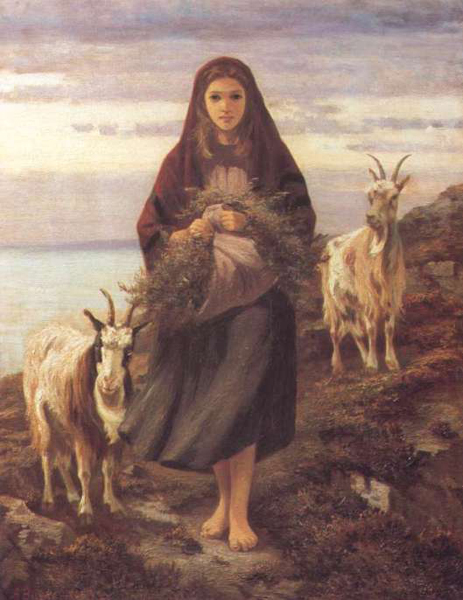The daily life of a peasant girl in Ireland is elevated by this simple, yet powerful image. A Connemara Girl is one of the most recognized young, barefoot goat-herders in art history. She stands strong with her bundle of sticks high above the sea with her charges and companions, the goats, by her side. Her appearance and the ethereal backdrop give this painting both an air of Irish mystery and a Biblical essence.
The calm smile on her face does not belie the difficult work she daily performs and the great effort that got her to this precipice. However, in the rapidly industrializing world of the second half of the 19th century, rural life was frequently idealized and emphasized over city living, which was seen as dark, dirty and dangerous. Images like Jean-Francois Millet’s The Gleaners, 1857, famously attached a sacredness, innocence and wholesomeness to country laborers. And many artists favored countries like Ireland, still an agricultural based nation during this time, as a retreat from the rapidly industrializing cities of Britain and Europe. In these respects an Irish goat herder girl is quintessential of the artistic concerns of the era.
However, the reality of this girl’s life would be equally dangerous as a city girl- often alone in remote places, at the mercy of the elements as well as passing rogues or just enthusiastic animals. Liaisons with girls in these sorts of environments have been depicted for centuries. Interestingly, goats are usually more associated with naughty behavior than the innocent shepherdess surrounded by little lambs.

